
By Alex Jones
EERIE photos show a once bustling village deliberately drowned by a multi-coloured toxic lake by a communist dictator.
Fascinating, if not somewhat unsettling, photos show an abandoned graveyard slowly being consumed by an almost fluorescent turquoise lake, the spire of a church poking forlornly through the murky red waters, and another crumbling rooftop seemingly floating on the red and yellow sludge of a nearby mine.
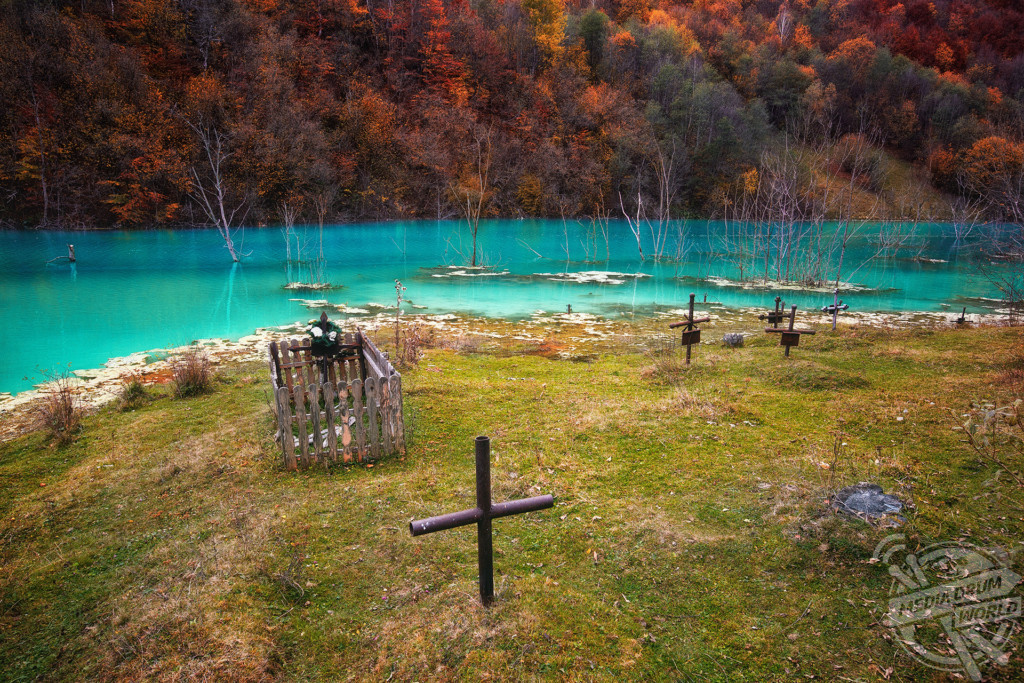
The stunning images capture the Romanian ghost village of Geamana, which was evacuated and deliberately flooded in 1978 to make way for one of the continent’s largest copper mines.
The waste products of the mine were washed into a manmade valley, spelling the end for the mountain community.
Romanian photographer and urban explorer Cristian Lipovan (36) frequently visits the foreboding lake and witnessed year on year how the village which was once home to hundreds of people has sank below the lurid, poisonous water.
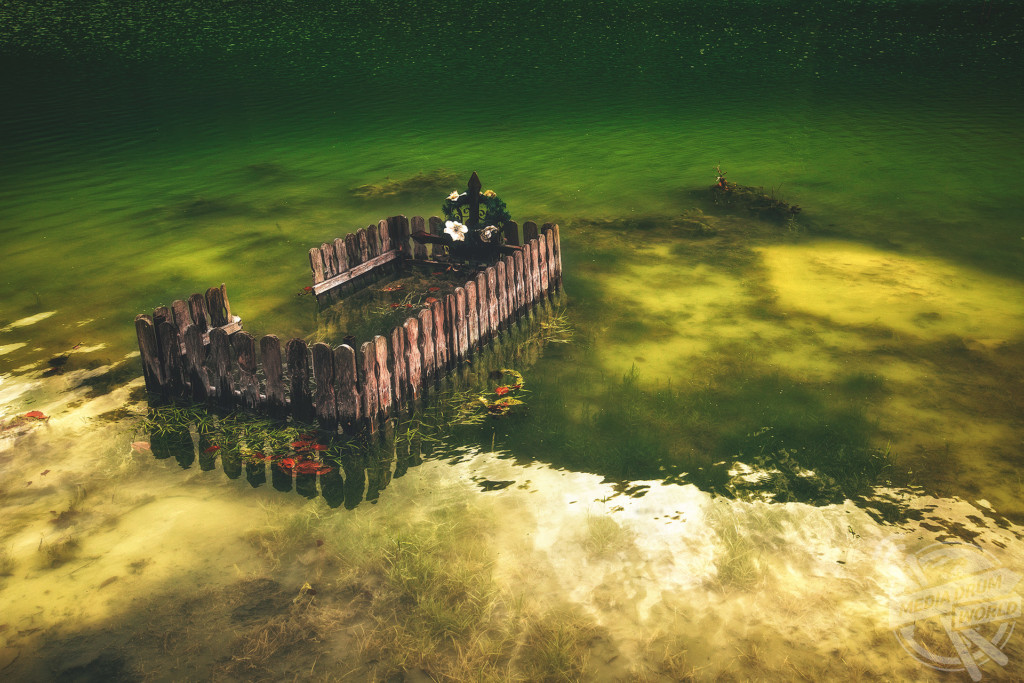
“Geamana is a missing village, a ghost village, swallowed by a lake that has vivid, unreal living colours,” he said.
“The water that surrounds the hill is red in colour, it shows that everything is poisoned, from water, grass, trees, fruits, vegetables, animals and ultimately man.
“The lake is growing rapidly, and there are still people living in the area who live with the threat of poisonous water encroaching on their homes.
“The atmosphere is bleak and gloomy because of the psychedelic, unnatural colours and because of the poor, unfortunate people who spend their days eating, drinking, smelling and breathing poison.”
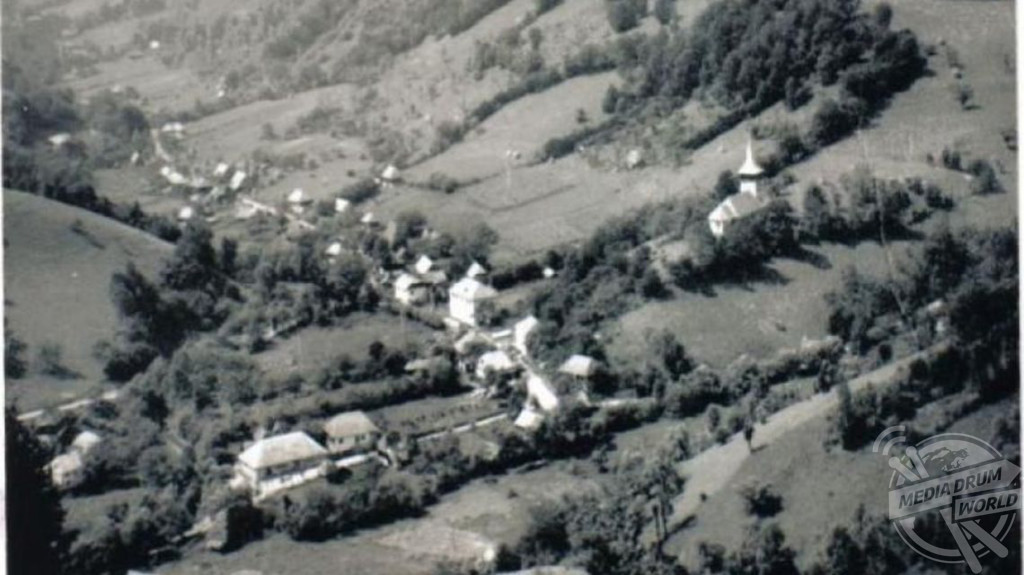
In 1977, communist dictator Nicolae Ceausescu announced the plans to build the Roşia Poieni super mine and offered affected residents approximately £1,500 each to leave their homes, some of which had been there for generations.
A year later the village, settling in the valleys of the stunning Apuseni Mountains, was under the polluted, metallic water.
At it’s peak the Roşia Poieni mine was producing over 11,000 tons of copper annually, comfortably making it the biggest mine in Romania.
As a steady supply of acidic grey-and-red liquid filled Geamana’s valley following the mine’s opening, 20 villagers refused to leave and simply moved to higher ground.
“The sad story began in 1977, when Nicolae Ceausescu moved the population from Geamana village to make a waste disposal site for the Roşia Poieni copper mine.,” said Lipovan.
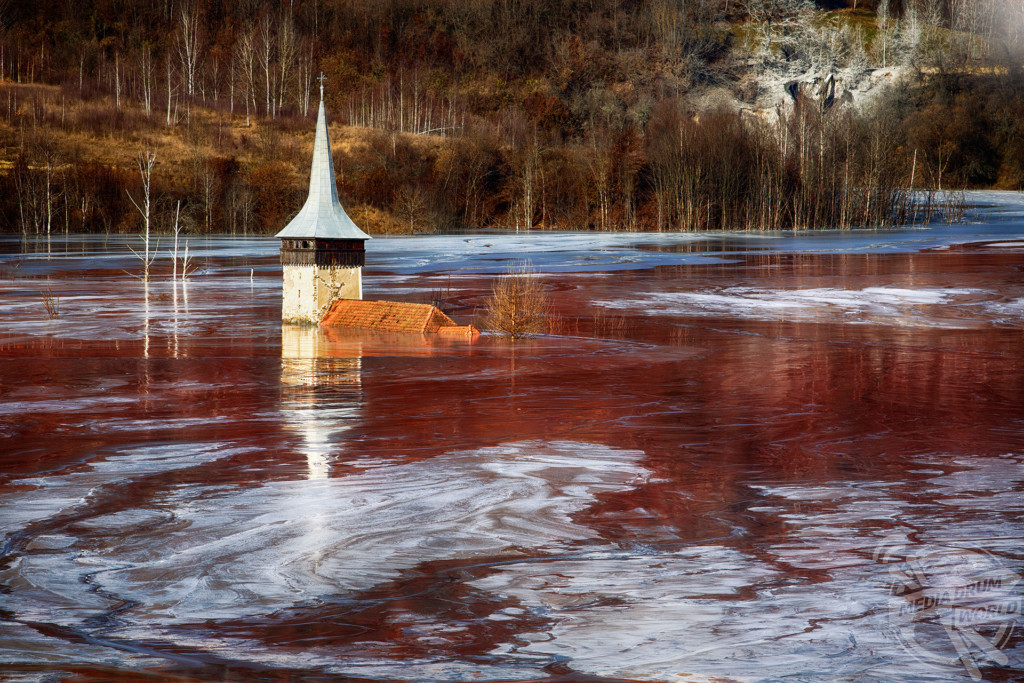
“It is the largest copper mine in Romania and at that time it was the largest in Europe.
“It’s now creating a real ‘ecological bomb’ in the Apuseni Mountains.
“In the first phase of flooding, the village of Geamana disappeared ,with everything in it: the houses, the church, the cemetery.
“Next, the threat moved to the surrounding villages, in which have been swallowed hundreds of houses and another cemetery.
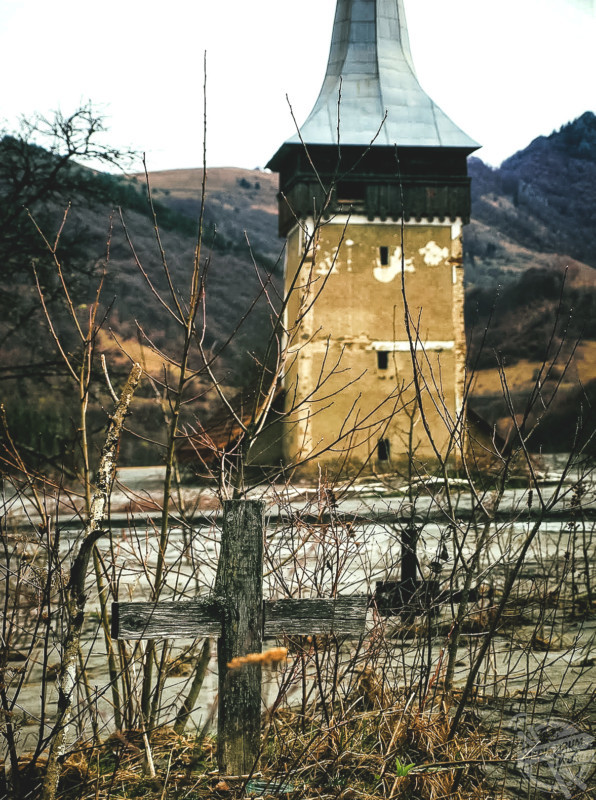
“One church was dismantled stone by stone and rebuilt in a museum in Sibiu.
“Still, there are some people who have been ambitious enough to stay until the very end.”
With the lake rising on average three vertical feet every year, their time is surely running out.






